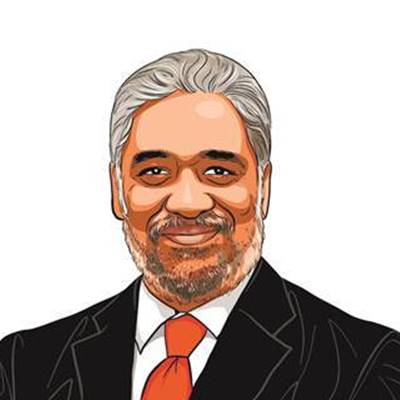Opinion Beijing in SAARC
The presumed Sino-Indian solidarity at the BRIC summit last week in Brasilia will give place to more traditional mutual suspicion next week at the annual gathering of South Asias leaders in Thimphu,Bhutan....
The presumed Sino-Indian solidarity at the BRIC summit last week in Brasilia will give place to more traditional mutual suspicion next week at the annual gathering of South Asia’s leaders in Thimphu,Bhutan.
It has never been difficult for China and India to invent common rhetoric on global issues of the kind that were in play in Brasilia. But when the focus shifts to their shared periphery in Asia,it has never been easy for them to cooperate. The Sino-Indian regional tension is the sharpest when it comes to the subcontinent.
 In Thimphu,the Indian media attention will be focused almost entirely on Indo-Pak relations and whether Prime Minister Manmohan Singh “shakes hands with/runs into/talks to” the Pakistani premier Yousaf Raza Gilani. India’s long-term challenge at SAARC — the South Asian Association of Regional Cooperation — however,is about the impact of a rising China on the geopolitics of the subcontinent. All across Asia,the rapid growth of the Chinese economy is spilling over its borders into the adjacent regions. Amidst the deepening integration between China and its Asian neighbours,Beijing’s political influence has become irresistible.
In Thimphu,the Indian media attention will be focused almost entirely on Indo-Pak relations and whether Prime Minister Manmohan Singh “shakes hands with/runs into/talks to” the Pakistani premier Yousaf Raza Gilani. India’s long-term challenge at SAARC — the South Asian Association of Regional Cooperation — however,is about the impact of a rising China on the geopolitics of the subcontinent. All across Asia,the rapid growth of the Chinese economy is spilling over its borders into the adjacent regions. Amidst the deepening integration between China and its Asian neighbours,Beijing’s political influence has become irresistible.
The story is no different in South Asia,where China has become the single most important external power for the region. Whether it is the exploding volumes of trade,its investments in strategic infrastructure overland as well as at sea,or its expanding military ties,China looms large over the subcontinent.
India’s neighbours actively supported China’s entry into SAARC as an observer at the 2005 summit in Dhaka. There has been no clear definition,however,of the role observers might acquire in the SAARC process. Not surprisingly Beijing wants a more purposeful presence at the SAARC summits,and Delhi is yet to make up its mind.
Delhi’s options
Beyond the formalism of the SAARC sessions,India has three options in dealing with China’s rising profile in the subcontinent.
The first is to persist with the old proposition that South Asia is India’s exclusive sphere of influence and build a great wall against China’s further penetration into the subcontinent. There is no hope at all that such a policy might succeed,as China becomes the largest trading partner of all the South Asian countries,including India. Meanwhile given India’s problems with all its neighbours,every one of them has learnt the art of playing the “China card” against Delhi.
The second is to restructure India’s neighbourhood policy. The assumption here would be that the problem has less to do with China and is all about India’s inability to deepen economic cooperation with the neighbours and resolve outstanding political problems with them.
This in fact has been India’s stated policy since the late 1990s. After Inder Kumar Gujral proposed a more generous policy to India’s neighbours,both Atal Behari Vajpayee and Manmohan Singh have expanded on it. But Delhi has a long way to go in converting its good intentions into concrete results and engineering a structural change in its relations with its smaller neighbours.
A third option is to develop a strategy of working with China to transform the subcontinent. From a practical perspective,it is reasonable to ask: if China can’t be kept out,why not try and define the terms of its engagement?
Delhi will indeed find this a bitter pill to swallow. Delhi’s comfort level with Beijing may have to rise a lot more before the idea of India-China cooperation in South Asia can take off. One way of getting there,however slowly,is for Delhi and Beijing to start talking about the subject at the official level.
Bhutan in balance
The inherited legacy of mutual distrust between Delhi and Beijing finds expression in the very venue of the 16th SAARC Summit. Bhutan is the only South Asian nation that does not have diplomatic relations with China.
Bhutan’s very special relationship with India,based on a bilateral treaty,adds to the complexity of India-China relations. Some in Beijing think it is Delhi’s opposition that prevents Thimphu from having comprehensive ties with China. India says it is entirely up to Bhutan.
The lack of diplomatic ties,however,has not prevented contact between the two. The annual consultations on their disputed boundary,which runs a little less than 500 km,have become a vehicle for sustained bilateral engagement. Given Bhutan’s geographic location,the nature of its boundary settlement with China is expected to have considerable effect on the management of the Sino-Indian border.
raja.mohan@expressindia.com





